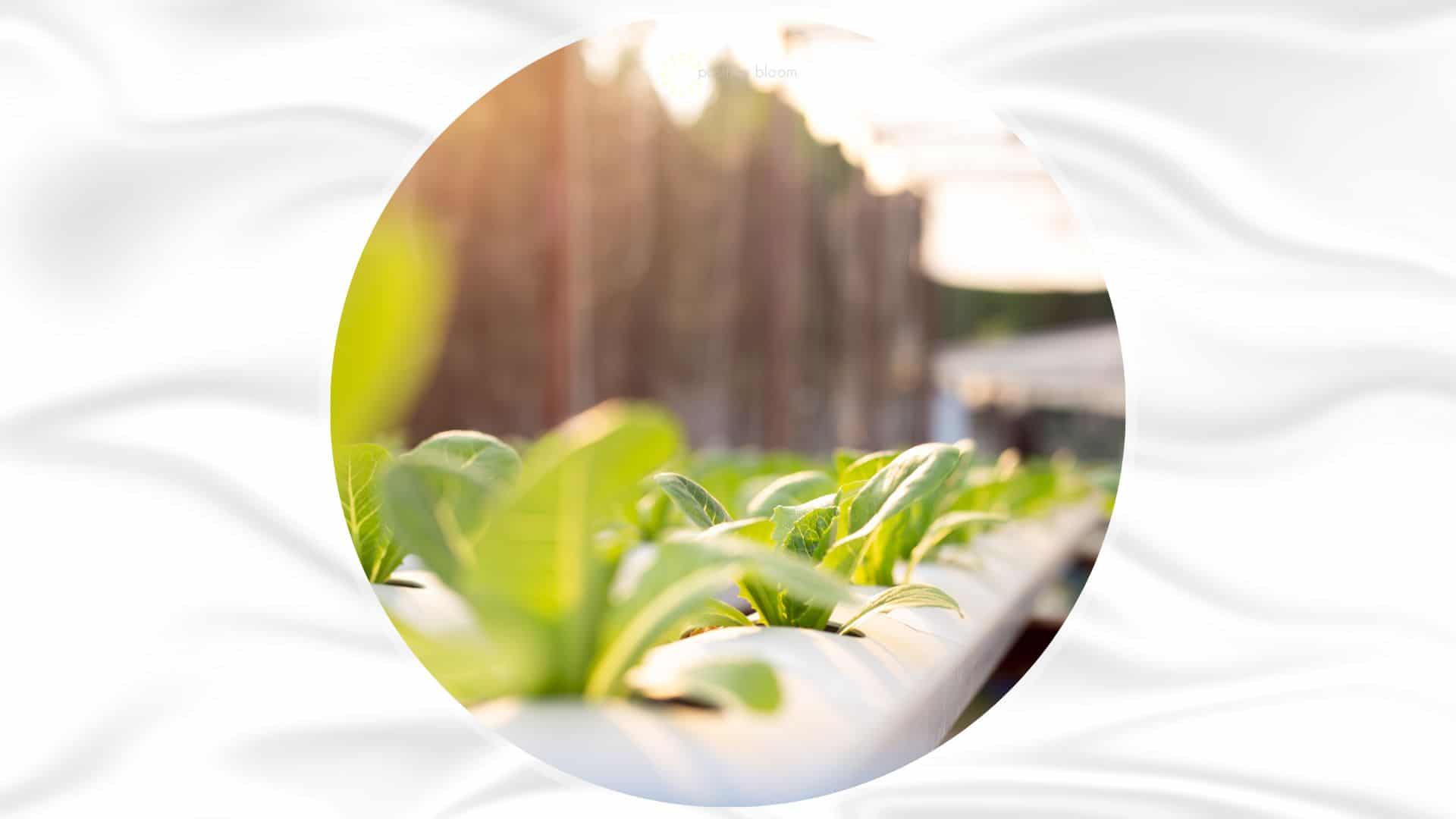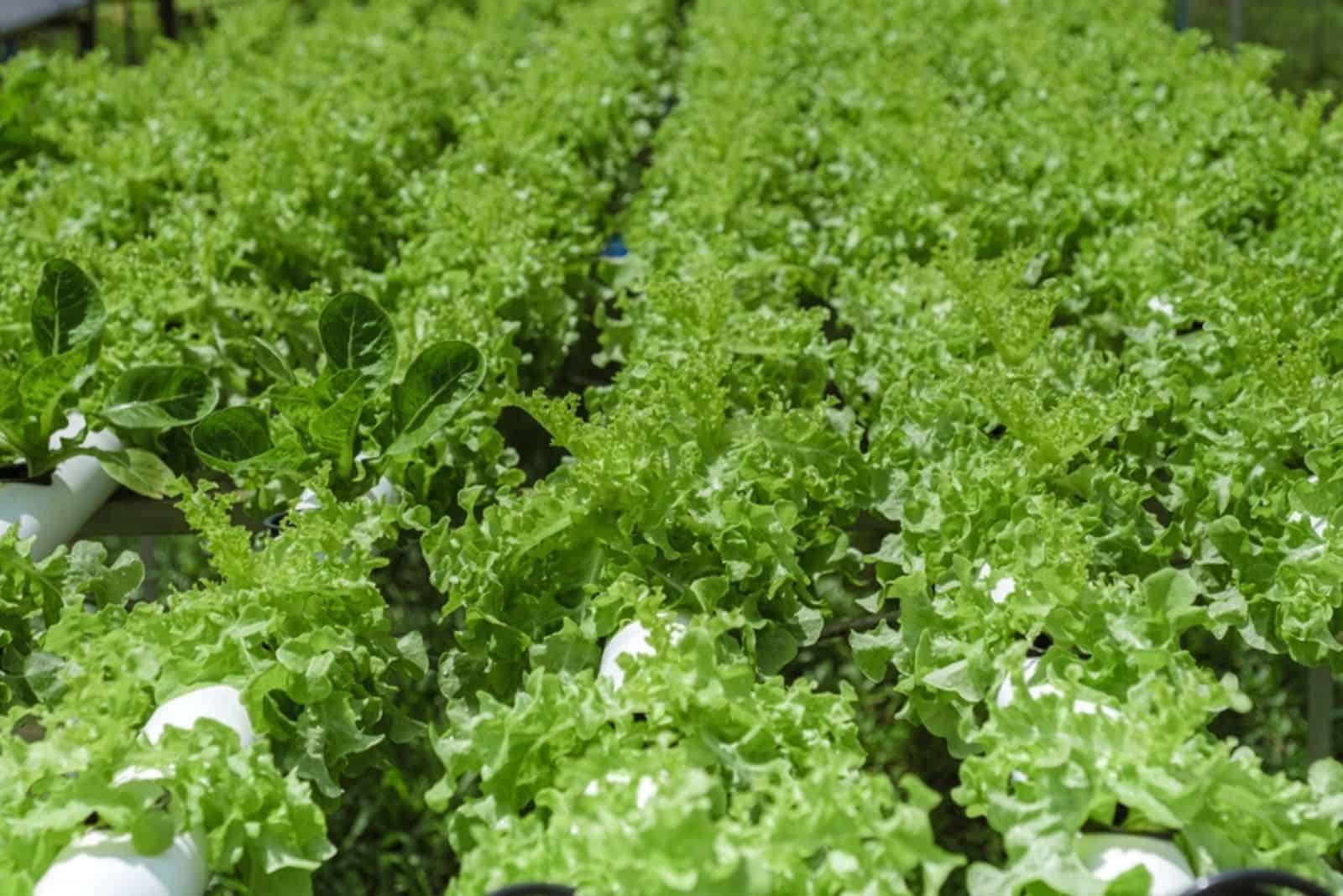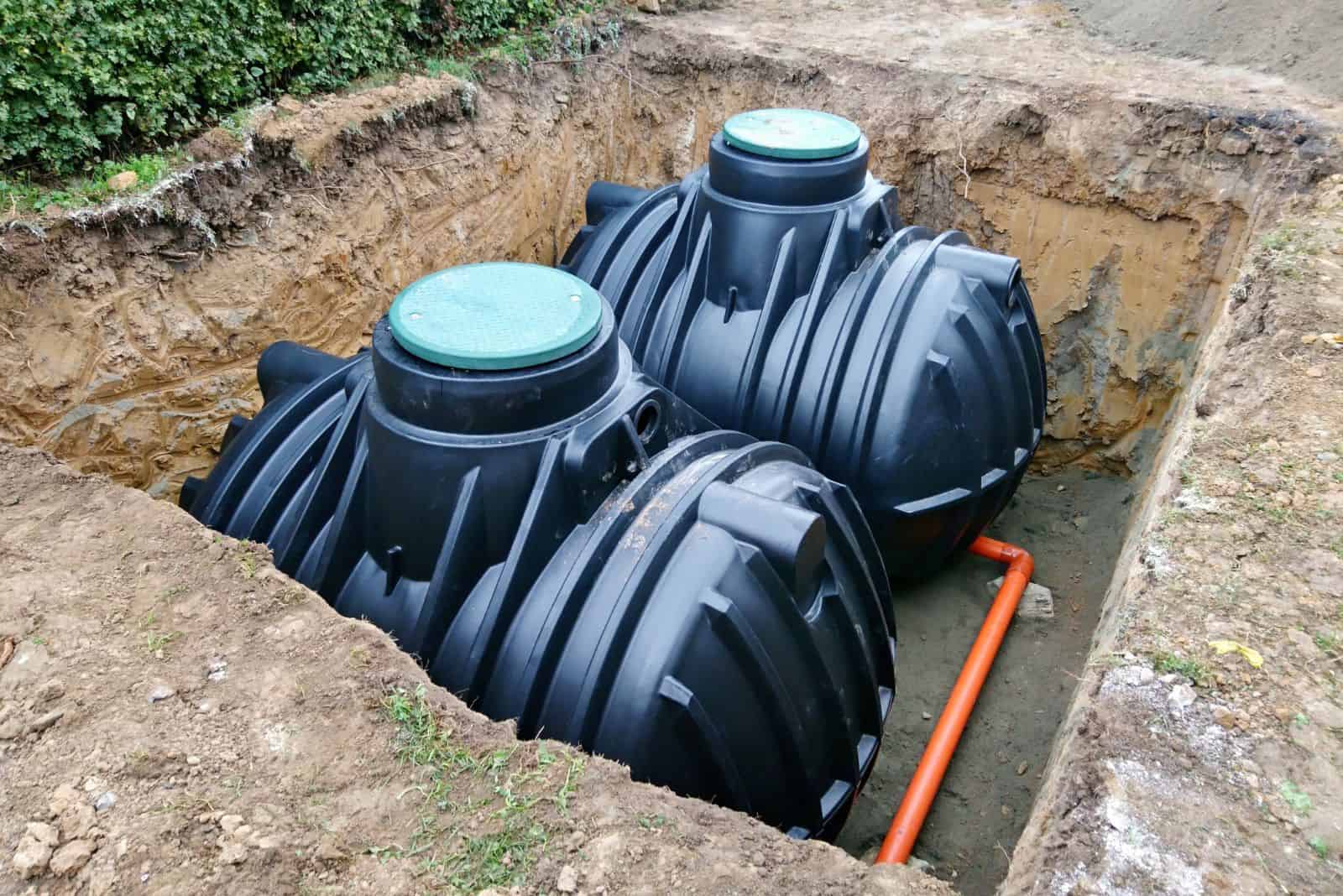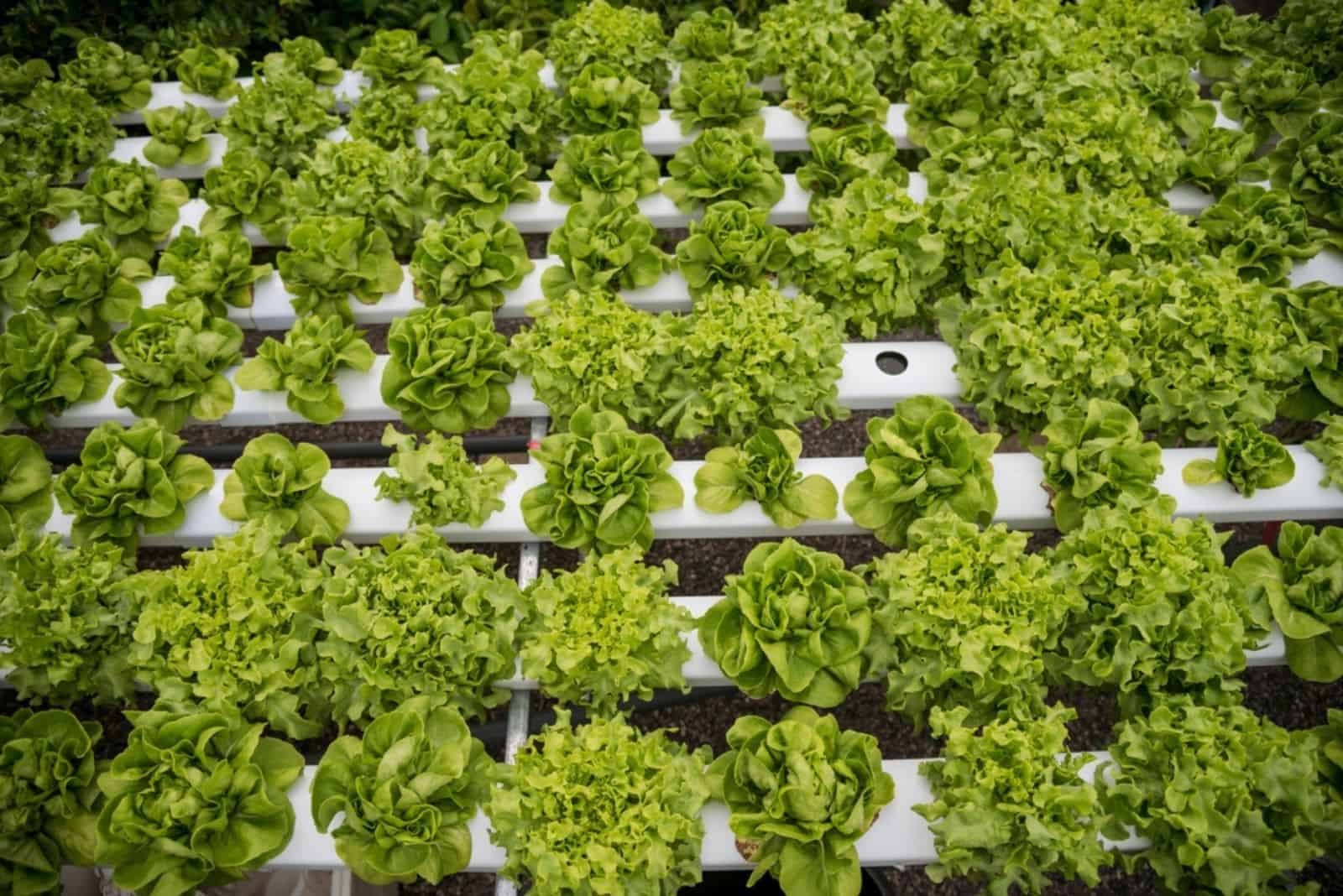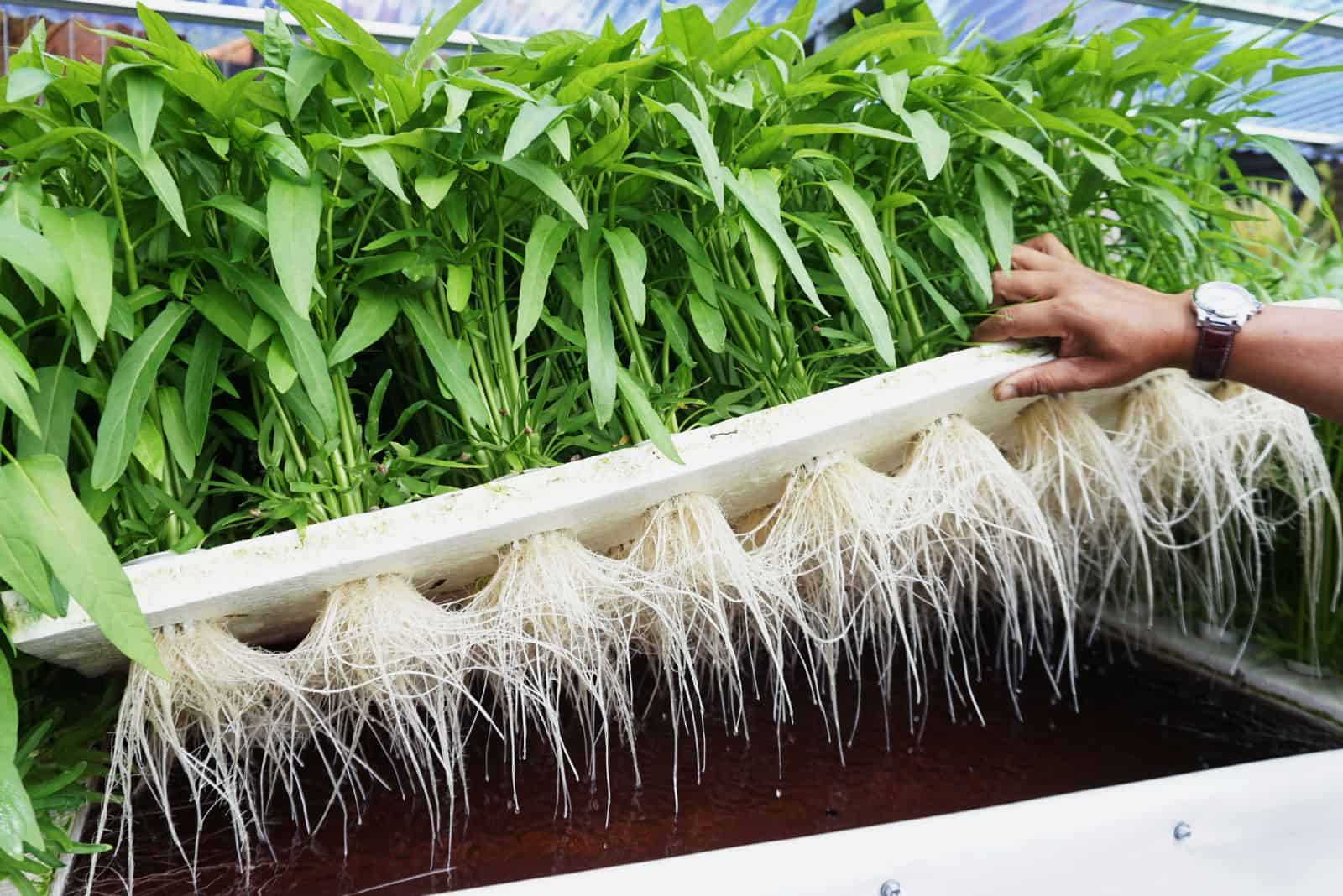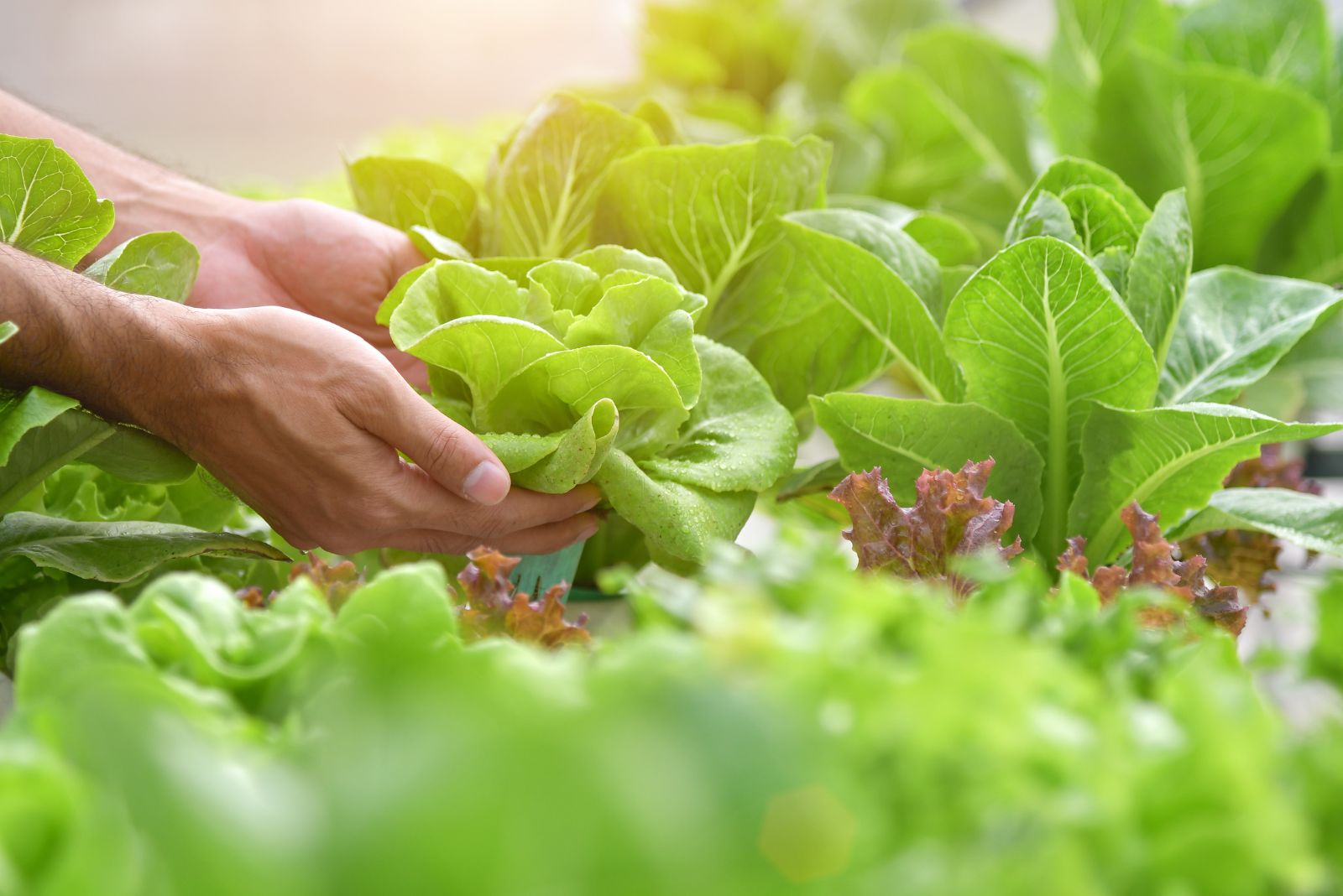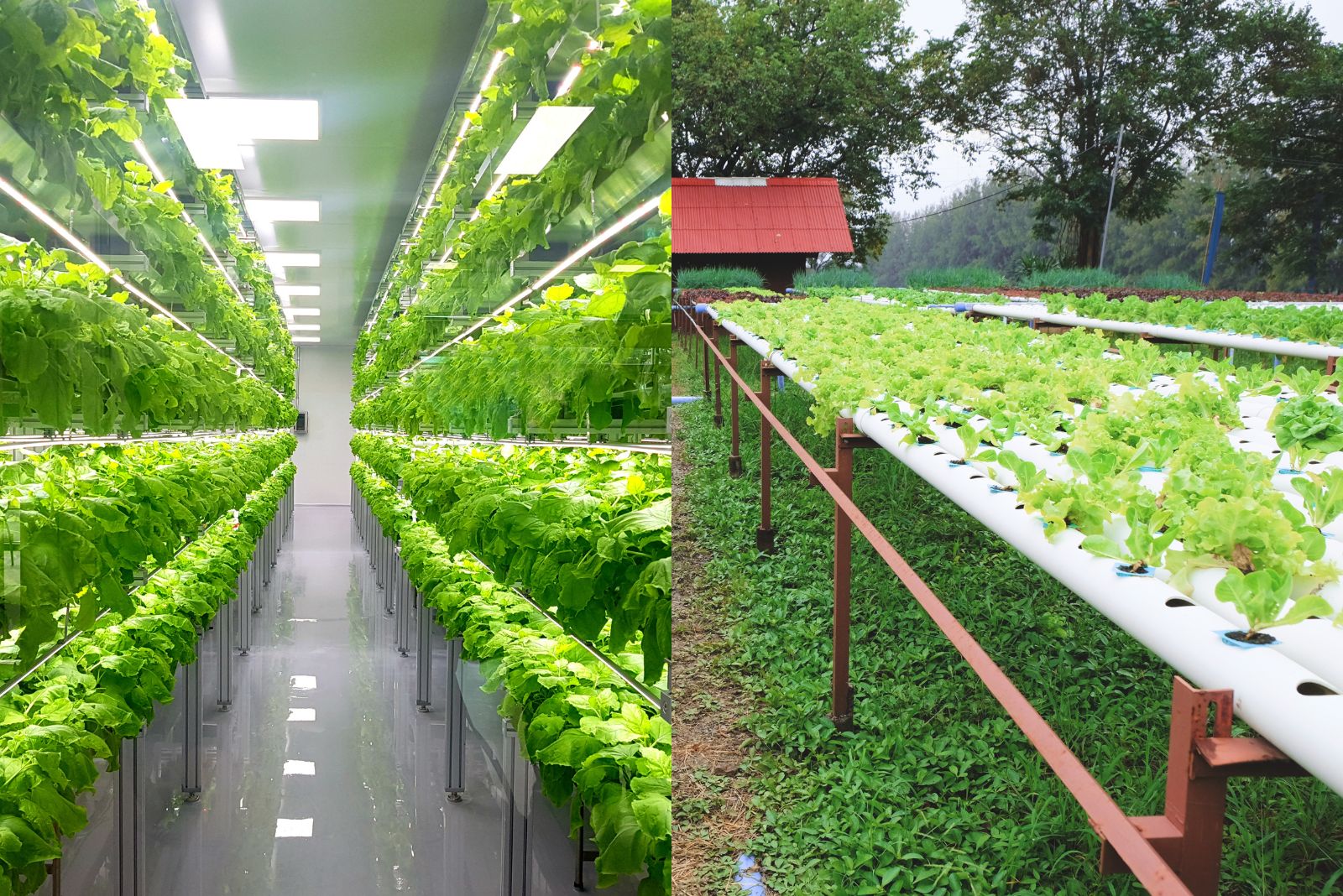Hydroponic gardening is a method of growing plants in a nutrient-rich solution instead of soil. You can grow all sorts of plants in a hydroponic system, from leafy greens and herbs to flowers and fruits.
Growers all over the world use it for indoor gardening, in greenhouses, or urban settings. But did you know that you can also move it outside?
Of course, you will have to make certain adjustments to your outdoor hydroponics, such as maintaining cool water, providing proper air circulation, controlling pests, etc.
In this article, you will find some tips that can help you start your very own outdoor hydroponics garden, discover some interesting systems, and learn the pros and cons of the method.
Let’s begin!
7 Tips For Outdoor Hydroponics Gardening
Many beginners stay away from hydroponic gardening because they think it’s way out of their league, but it’s actually much simpler than you’d think.
All you need to do is utilize the natural sunlight so that you don’t have to spend more money on grow lights, keep the water cool, and ensure proper airflow at all times.
Of course, there are certain adjustments you’ll need to consider, such as helping plants with heat, lowering electrical conductivity, and keeping pests and insects away.
And the good news is that you can easily grow hydroponic flowers, veggies, and fruits this way!
1. Use The Sun
One of the best things about outdoor hydroponic growing is the free light source you get all day long, which is much better than any artificial light.
Place your hydro system where your plants can get plenty of direct sunlight during the day. East or south-facing garden areas are perfect since your plants will get enough light during the cooler times of day, and some shade during the hot afternoons.
But don’t forget to utilize the shade as well. For instance, the water reservoir needs shade to regulate the temperature and keep it cool.
Luckily, you can always use a shade cloth if you cannot protect your plants any other way, which will prevent them from burning in the scorching sun, and the water from overheating.
2. Provide Proper Airflow
Another advantage of setting up an outdoor system is the unrestricted airflow from the wind, which keeps the leaf pores open.
In return, it improves photosynthesis because plants absorb more CO2 and balances the transpiration and oxygen release.
A light wind will dry the foliage, prevent them from developing fungal diseases, and keep the plants cool on hot days.
Of course, strong and stormy winds will hurt your plants. They can break their stems, result in the closing of the leaf pores, and cool them below their liking.
Therefore, when setting up an outdoor hydroponic garden, ensure there’s both enough air circulation and protection to keep the plants safe from strong gusts of wind.
3. Keep The Water Cool
The evaporation rate of water in outdoor hydroponic systems is much higher than indoors, so you need to keep the water tank cool to regulate the temperature (especially in the summertime).
There are a couple of ways you can do this:
• Get a shade cloth and place and remove it when needed.
• Place your hydro system in a sheltered location away from the hot midday sun.
• Pour cold water into the reservoir (remember to adjust the pH and nutrient solution accordingly).
• Place frozen water bottles into the tank to maintain the proper temperature during heat waves.
• Partially bury the water tank to keep it cool and insulated.
• Get a water chiller. This option is relatively expensive, but at least you won’t have to worry about the temperature all the time.
Lastly, always maintain a proper water level; if the tank is empty, it can be disastrous for your plants’ root systems.
4. Lower The EC Of The Nutrient Solution
If the electrical conductivity of the nutrient solution is too high, your plants will exhibit stunted growth and their foliage will turn brown.
Therefore, lower the EC in hot summers to facilitate water absorption. You can achieve this by reducing the amount of hydroponic nutrients you add to the tank.
Optimal EC levels during hot weather are medium-to-low, but if you notice browning of the foliage, you should lower it even more.
Of course, you might need to adjust it for different veggies since growing hydroponic carrots, cucumbers, and daffodils isn’t the same.
5. Help Plants Tolerate The Heat
Sometimes our plants need an additional push to handle the summer heat in addition to cool hydroponic water.
For instance, seaweed extract and humic acid are excellent at strengthening plants’ roots, and improving water uptake and heat tolerance.
Use a ratio of 2:5 of seaweed and humic acid before the hot period arrives. This way, the plants can absorb these additional nutrients that will keep them safe from cellular damage and stress due to excess heat.
6. Pest Control
Pest infestations are inevitable when caring for plants outdoors, so you should grow trap crops around your hydro system to keep them away from your veggies.
And if you hate sacrificing anything to these nuisances, you can always use horticultural oils, insecticides, or dish soap and water.
Luckily, you can avoid infestations altogether if you keep your plants healthy. Therefore, use specialized all-purpose hydroponic fertilizers with high ratios of nitrogen and potassium.
You can also use calcium to strengthen the plants and increase their tolerance to changing temperatures.
Just remember that too much fertilizer can result in weak fruit and veggie stems and turn them into prey for insects and fungi, so use the solutions moderately.
7. Use A Proper Hydro System
Generally speaking, ebb-and-flow, top feed, and aeroponic systems are the best ones for outdoors because they’re not that susceptible to weather changes.
However, there isn’t just one hydroponic system that we can say is the best for all plants. It greatly depends on the quantity you want to grow, the type of plants, climate and weather conditions, space, surrounding flora, etc.
Therefore, it’s good to talk to a friend who’s been growing hydroponics for a while, or an expert on the subject.
For instance, when growing hydroponic tulips, it’s enough to keep them in a shallow tray with water, while watermelons thrive in ebb-and-flow systems.
Different Outdoor Hydroponic Systems
There are many common types of hydroponic systems you can use to create a “water home garden.”
However, not all of them are suited for outdoor hydroponics, or will require more maintenance to work properly.
Therefore, we included some excellent, as well as some less ideal techniques and methods, to choose from, such as aeroponics, DWC, ebb-and-flow, the Kratky method, etc., so that you can find the right one for you.
Aquaponics
An aquaponic system is a technique that combines two food production methods:
1. Aquaculture (the cultivation of fish or other aquatic animals).
2. Hydroponics (the cultivation of plants in water) in an environment that benefits both of them.
In this system, the beneficial bacteria break down fish products into nitrites and nitrates, which plants can use. In return, plants help purify the water by absorbing these nutrients, which is then returned to the fish tank.
Aquaponics is very efficient since it constantly reuses the same water, and you’ll only have to replenish it after loss due to evaporation and transpiration.
Aeroponics
With this type of system, you grow plants hanging in the air and mist them with a nutrient solution and water. When we compare hydroponics and aeroponics, we can conclude that aeroponics uses less water, and you can even move it outside.
This system is suitable for small and large spaces; it is cost-effective and can produce plants faster than if you grow them in soil.
Another benefit of this system is that you can constantly monitor the plant’s roots, so you’ll be able to identify any issues early on.
Ebb-And-Flow
There are many greenhouse watering setups, each with its own benefits, but a hydroponic system like ebb-and-flow is perfect for the outdoors.
In it, you grow plants in a tray, which is periodically flooded with a nutrient solution and then drained. You need to flood and drain the tray several times a day, and if you don’t want to do it manually, you can always get an automated water pump.
The draining cycle allows the plants to uptake oxygen, which encourages healthy growth.
When growing plants in this system, you need to place them in an inorganic medium such as LECA pebbles or Rockwool for plants.
The good news is that you can DIY it by making it out of PVC pipes or a large plastic container with holes in the bottom, like the one from below:
Deep Water Culture (DWC)
Deep Water Culture is a hydroponic gardening system that involves growing plants in a container with their roots in a nutrient-rich water solution.
The water is oxygenated using an air pump and air stone, which helps to keep the roots healthy and promotes fast growth.
DWC is a simple and efficient method for growing plants hydroponically, and is suitable for growing lettuce, herbs, and small fruits.
However, controlling the water level outdoors is tough, and there are better choices than deep water culture.
The Kratky Method
The Kratky method doesn’t require electricity or a continuous water flow to encourage plant growth. This system is also known as the “passive hydroponics” or “non-circulating hydroponics” method due to a lack of flow.
You grow plants in containers filled with a nutrient solution, and as the plants uptake moisture and minerals, the water level in the container drops. This creates an air space between the water’s surface and the container’s lid, providing the oxygen the roots need to survive.
This low-cost and low-maintenance method is suitable for beginners, and you can use it to grow leafy greens, herbs, etc.
Vertical Hydroponics
Vertical hydroponics are just adjusted systems turned vertically. For instance, you can do this for NFT, aeroponics, and drip systems.
This method is perfect for limited spaces, as you can place the containers on a rack or hang them from the ceiling.
Benefits Of An Outdoor Hydroponic Garden
Outdoor hydroponics has many advantages. For instance, hydroponic gardens have free sunlight and air circulation, so you won’t have to buy fans, grow lights, etc. This also leads to low energy costs because you rely on natural energy sources.
Another benefit of an outdoor system is that it doesn’t take up too much space; you can place the containers on a rack, grow plants in PVC pipes or plastic containers, etc.
You can adjust the setups to your own needs, whether you want to place them horizontally or vertically, near or further away from your home, etc.
This also reduces the need for clear and fertile land as you don’t need any soil. Pest control is also easier as insects attack these plants less frequently. Therefore, there’s no need for excessive use of herbicides and pesticides.
Outdoor hydroponic systems also require less water than classic soil gardens, so they’re perfect for dry regions. It requires 10x less moisture and yields greater harvests.
Another thing that may increase your yield is free pollination. Birds, insects, and wind will do the hard work for you, so you won’t have to do it manually.
These systems are eco-friendly because they reduce the need for synthetic fertilizers and pesticides, while promoting the recycling of water at the same time.
Drawbacks Of Outdoor Hydroponic Gardening
While outdoor hydroponic systems have several advantages over other methods of growing veggies, they also have drawbacks.
These systems depend on the weather and are vulnerable to extreme changes, such as rain, winds, temperature swings, etc. These situations can lead to crop loss or damage.
And since this gardening method depends on weather conditions, it can be challenging to control humidity levels, temperature, and lighting. These factors make it more challenging to optimize growing conditions for your plants.
Weather conditions can also wear out your equipment, making maintenance and care more extensive.
Another disadvantage of having an outdoor system is that it is vulnerable to theft. Certain plants are quite expensive, not counting the costs of energy, water, and setting up the entire system.
Sometimes, you may require a permit to build such a system, depending on your area and local regulations.
Some setups need a power source to run the water pumps, fans, and other equipment, making it difficult to set up in remote locations.
Finally, there are seasons when it’s impossible to grow any plants due to weather or light conditions, depending on the location.
Indoor Hydroponics vs Outdoor Hydroponics
There are several differences between outdoor and indoor hydroponics, such as lighting, climate control, energy efficiency, pest control, space, price, and seasonal limitations.
We’ll discuss all these factors in the following sections so that you can see the clear difference between the two and opt for the choice that suits you best.
Lighting
Indoor hydroponic systems typically depend on artificial lighting to give plants the light they need to grow, while outdoor ones can take advantage of natural sunlight.
This can lead to faster growth and healthier plants in an outdoor hydroponic garden.
Climate Control
Indoor gardens offer more control over the growing environment, which is beneficial for optimizing the conditions for specific plants.
On the other hand, outdoor hydroponic gardens rely on natural conditions, and extreme weather or changes in temperature and humidity can affect them.
Energy Costs
Indoor hydroponic setups typically require more energy to run the artificial lights and fans, maintain proper temperature, etc.
The benefit of having an outdoor hydroponic system is that you can rely on natural light and wind, so energy costs are lower.
Pests And Diseases
Indoor hydroponic gardens are more susceptible to pests and diseases than outdoor ones because the conditions inside encourage the spread of insects and the growth of pathogens.
However, this doesn’t imply that the plants in an outdoor hydroponic setup cannot suffer from aphid, whitefly, and spider mite infestations.
Space
Indoor hydroponic gardens are typically smaller and more compact than outdoor hydroponic gardens, which are more space-efficient.
However, you can always choose a smaller setup for the outside. And if you have a large space outdoors, the size of the system isn’t an issue.
Seasonal Limitations
Sometimes it’s impossible to grow plants in an outdoor hydroponic garden because of the weather or light conditions.
An indoor garden is more flexible as it allows you to grow a wide range of plants, even out of season.
Price
Generally speaking, indoor hydroponic systems are more expensive overall because you have to include the cost of energy, the installation of grow lights, insulation to maintain the temperature, etc.
Outdoor setups don’t depend on these things, but you still have to invest some money into building a system that will fit your needs.
FAQ
What is the main goal of hydroponic farming?
The main goal of growing plants in hydroponics is to optimize growth and development using nutrient-rich water solutions instead of soil.
This method allows for greater control over the growing environment, and can increase the yield and speed it up.
You can grow hydroponics indoors or outdoors; indoor growing offers more control, but outdoor systems are cheaper and more energy-efficient.
What is the best time to plant outdoor hydroponics?
The best time to start outdoor hydroponics is in spring after all danger of frost is gone, although it depends on the plant.
If you want to start your plants earlier than that and jump-start the season, you can plant your veggies in a greenhouse.
It is also vital to consider the amount of light and heat the plants will receive during different seasons, as well as the relative humidity and rainfall.
And once you take all that into account, you can decide on the hydroponic system and medium you want to use (for instance, grow hydroponics in coco coir, LECA, etc.).
Final Thoughts
Outdoor hydroponics has many benefits over other growing systems; it utilizes sunlight and wind, is cheaper, less prone to pests and diseases, uses less water than plants grown in soil, is eco-friendly, etc.
Of course, you need to adjust it a bit, which is why you should lower the amount of nutrients at the beginning of summer to encourage water absorption.
Furthermore, this system has its limitations in terms of space and the fact that the weather dictates when and what you can grow. The weather conditions can also cause wear and tear to your equipment, and since it is in the open, it is susceptible to theft.
That’s why we also included the pros and cons of outdoor and indoor hydroponics, which can help you choose the system suitable for your needs, climate, and region.
Until next time!

